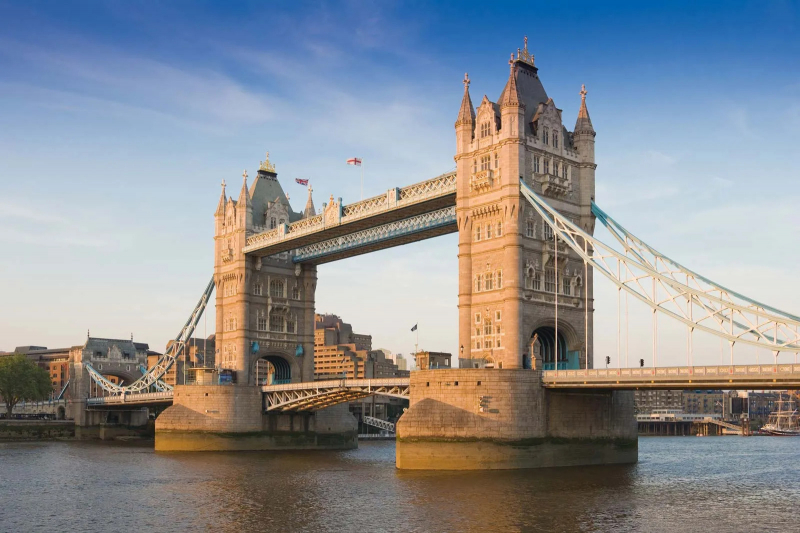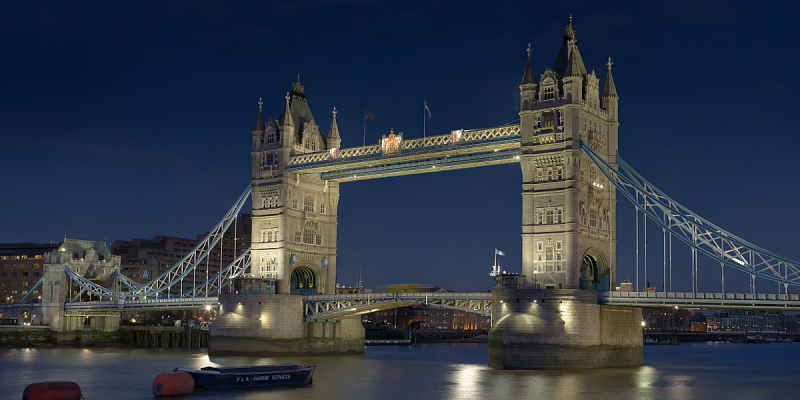Tower Bridge
The Tower Bridge, a hybrid bascule and suspension bridge in London, England, that spans the River Thames, was inaugurated by The Prince of Wales on June 30, 1894. It is one of the most famous sights in a city that is rife with famous landmarks. One of the oldest bridges in the ancient city of London is this one, which is frequently referred to as the Tower of London.
Its design incorporates a stone foundation laid by Edward VII, Prince of Wales, in 1886. The Tower Bridge was designed in the late 1800s by master architect Horace Jones, and construction on the stone foundation and installation of the bridge's beams began in 1894.
It is regarded as one of the most important sites in London and is frequently the subject of postcards or companies located in the city. At the conclusion of the Hollywood blockbuster "Sherlock Holmes," one of the final sequences is played out on the bridge.
The bridge was first opened in the summer of 1894 and traffic across the massive 800-foot structure was relatively moderate for the first few decades. Once automobiles began to be commonplace in England, the bridge’s design was able to accommodate the extra weight quite easily. It had been repaired after a bomb destroyed part of the center section early in World War II, but it has stood the test of time for more than a century.
Location: London, England
Architect: Horace Jones
















